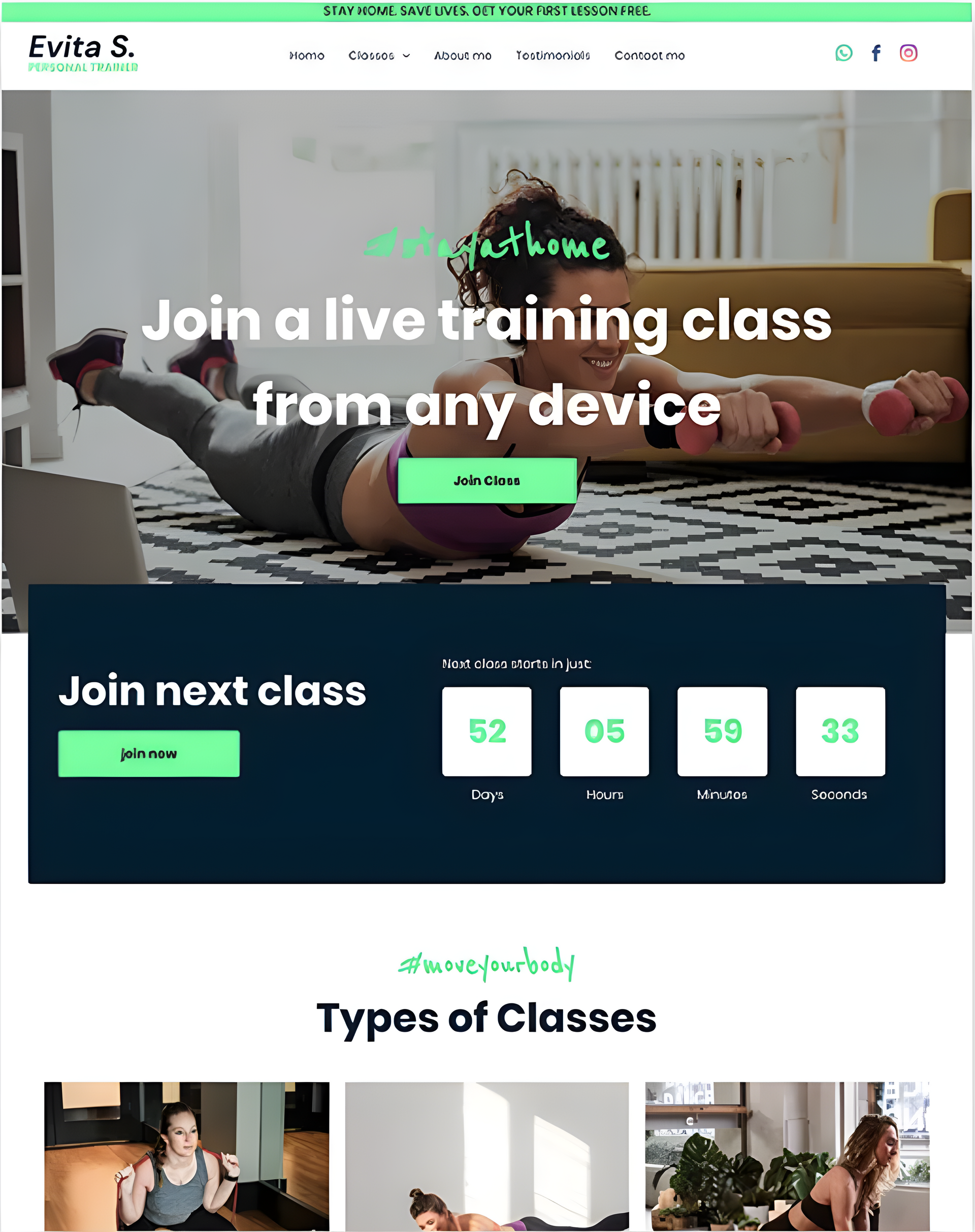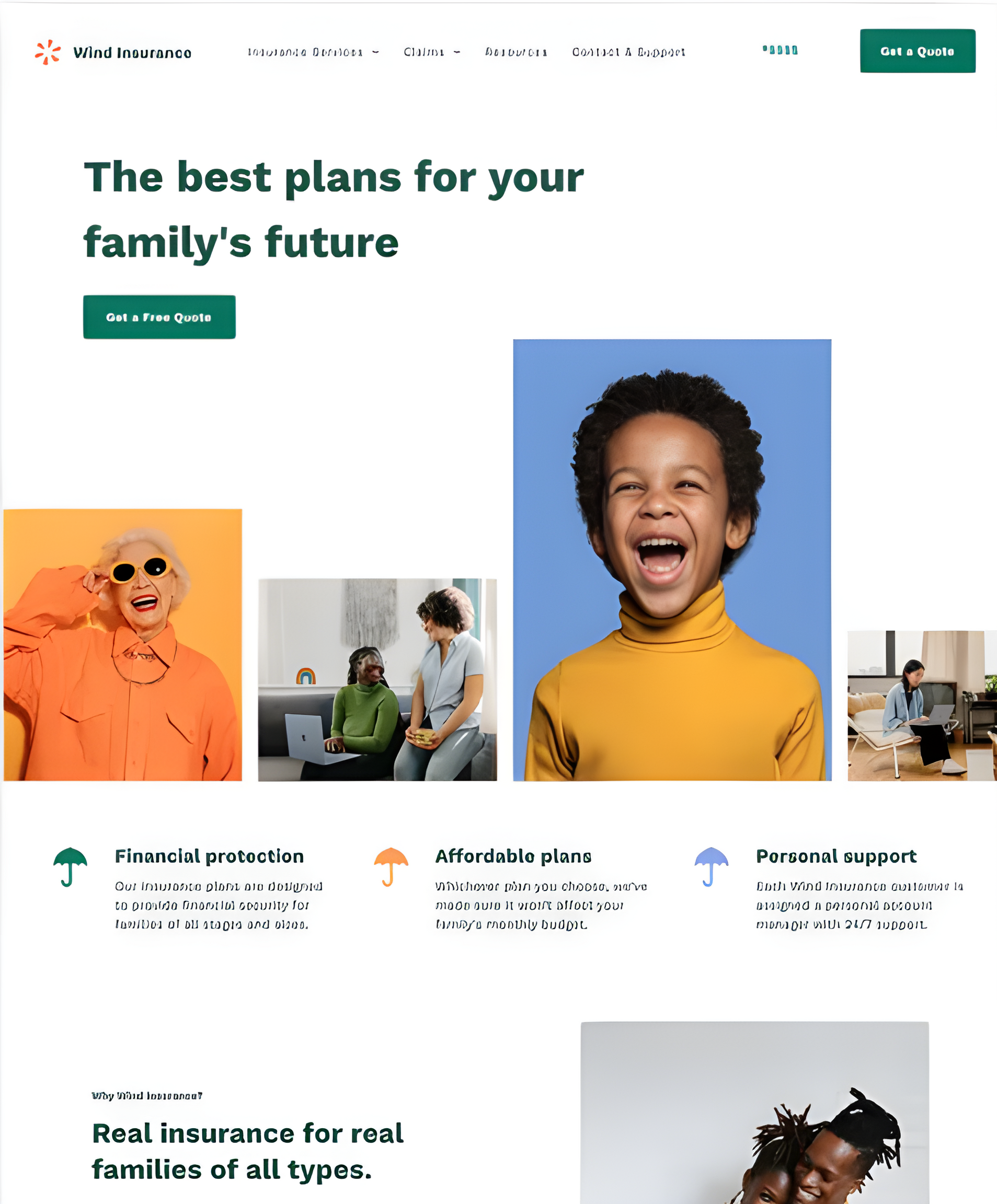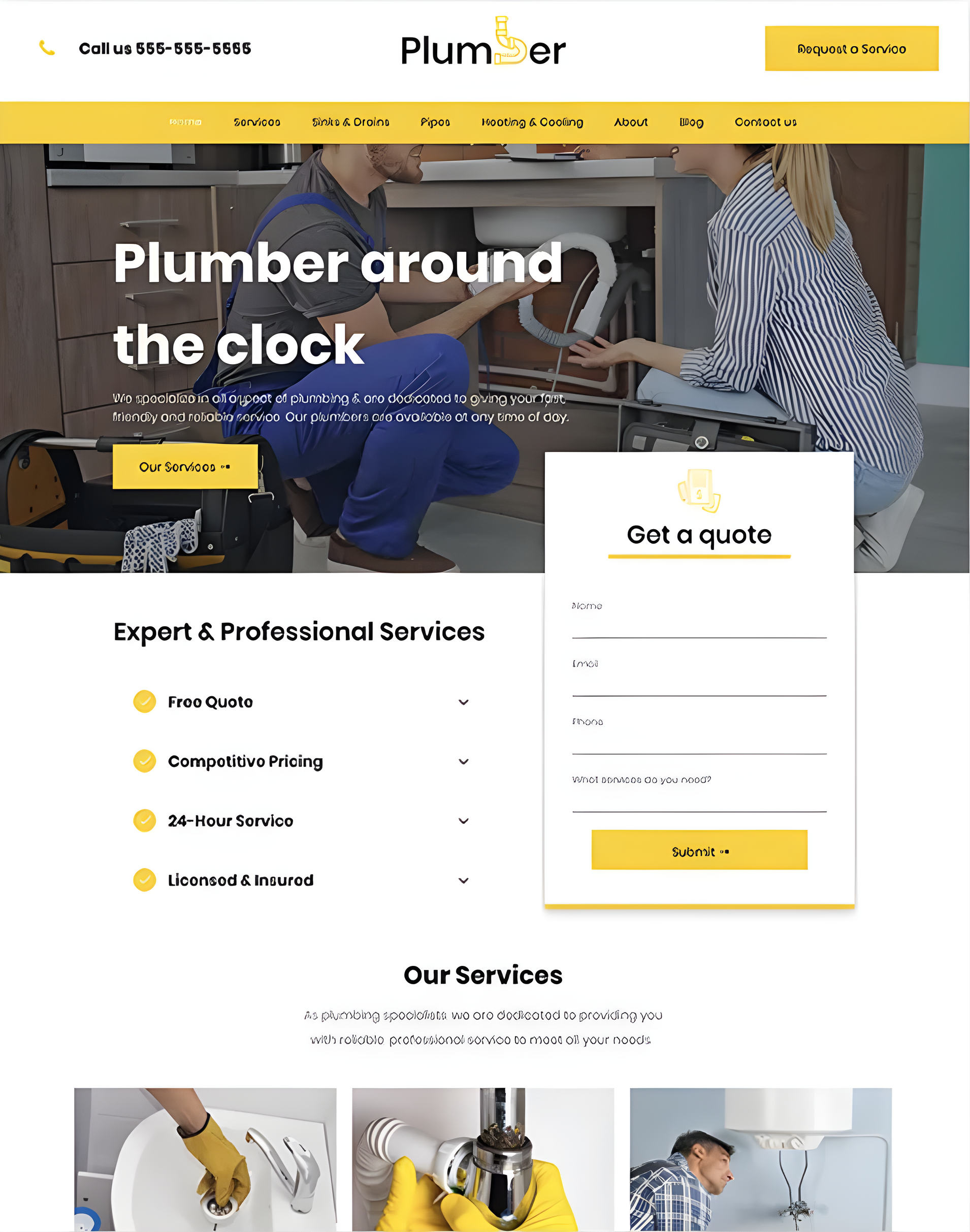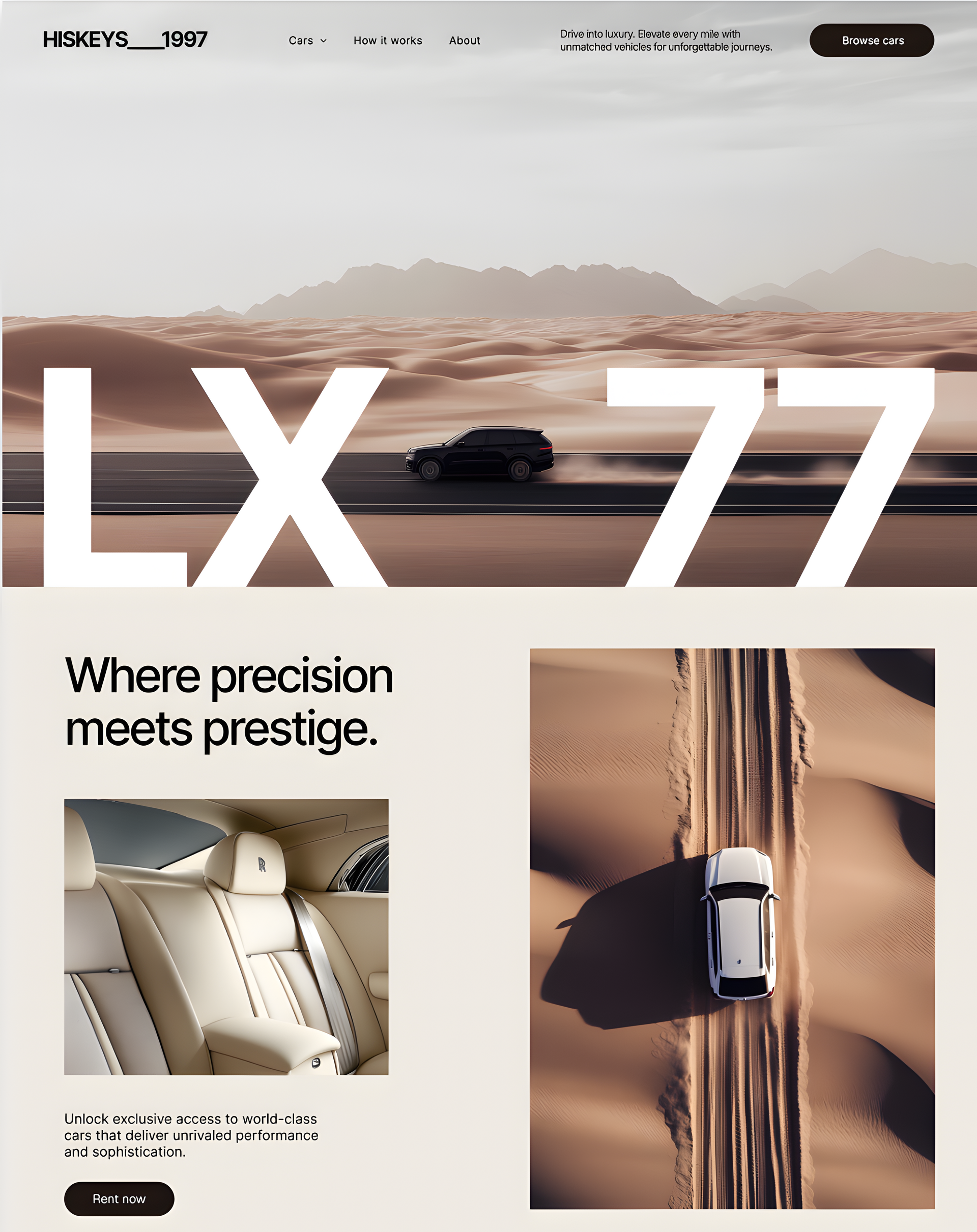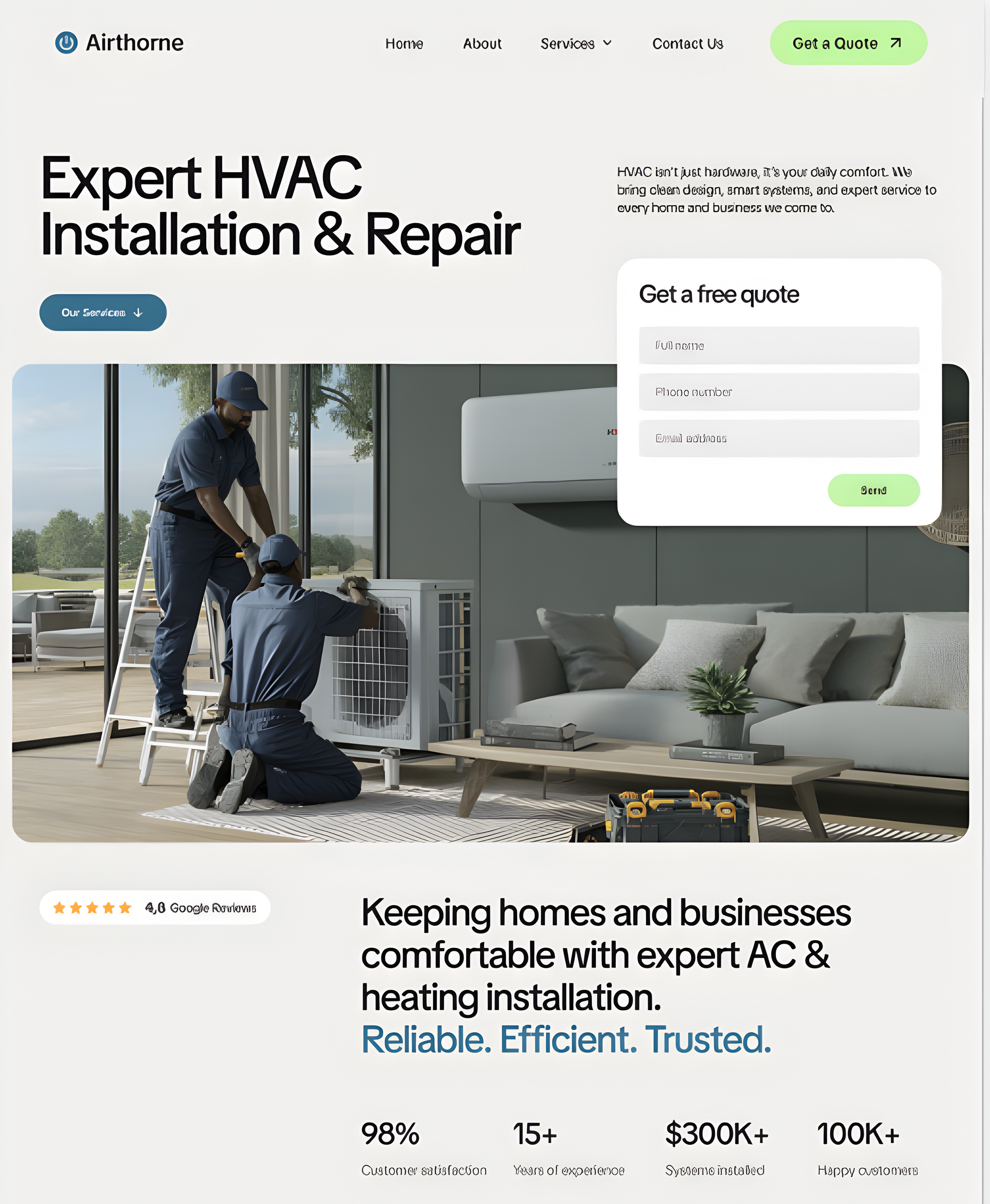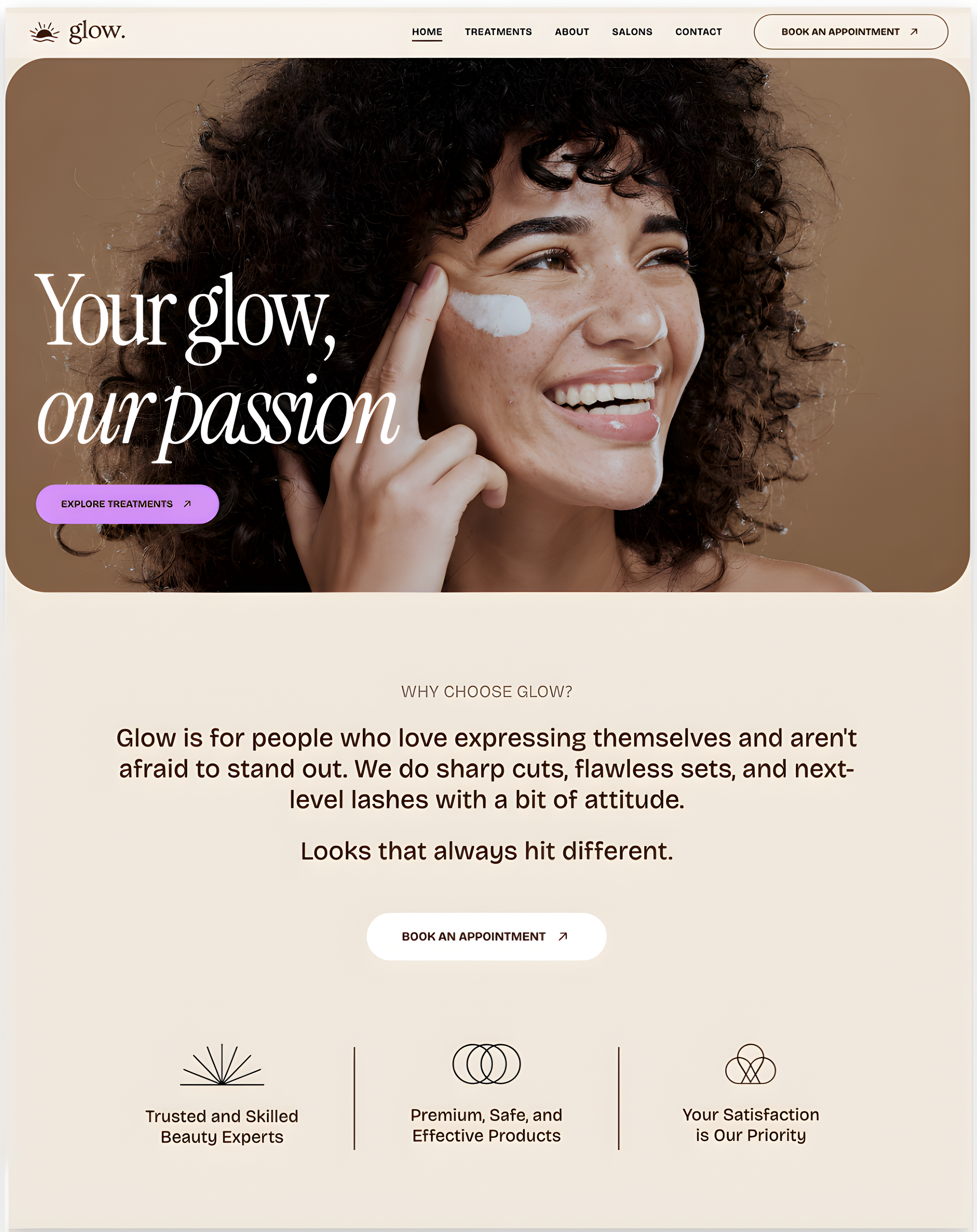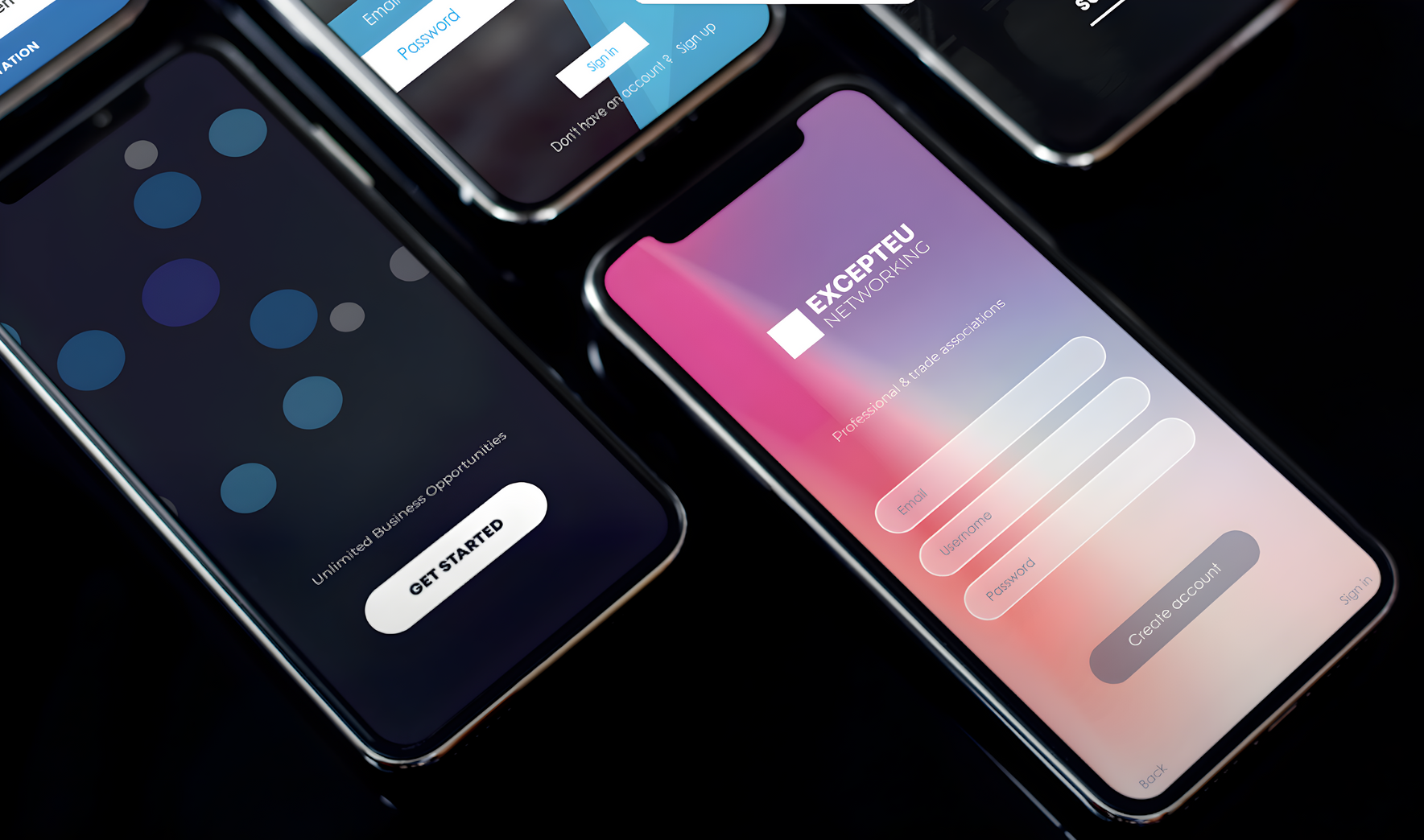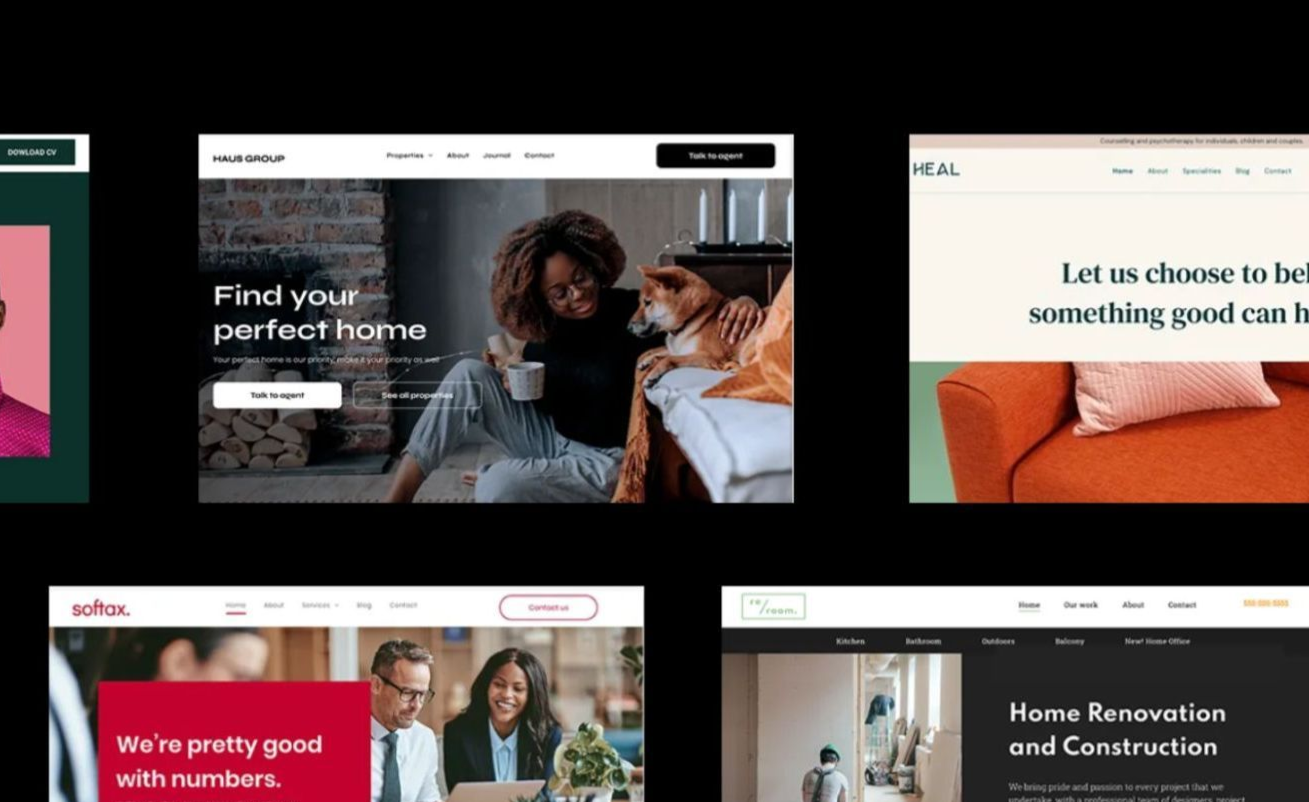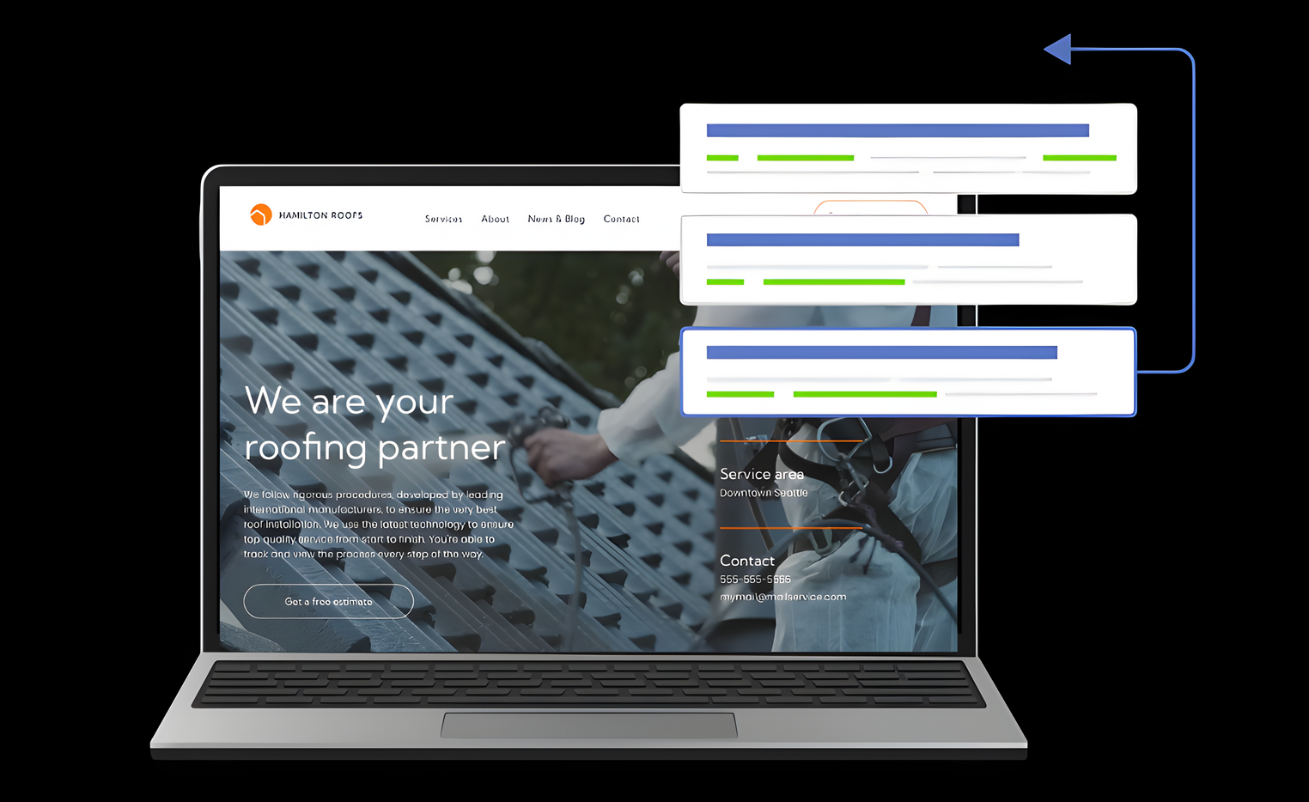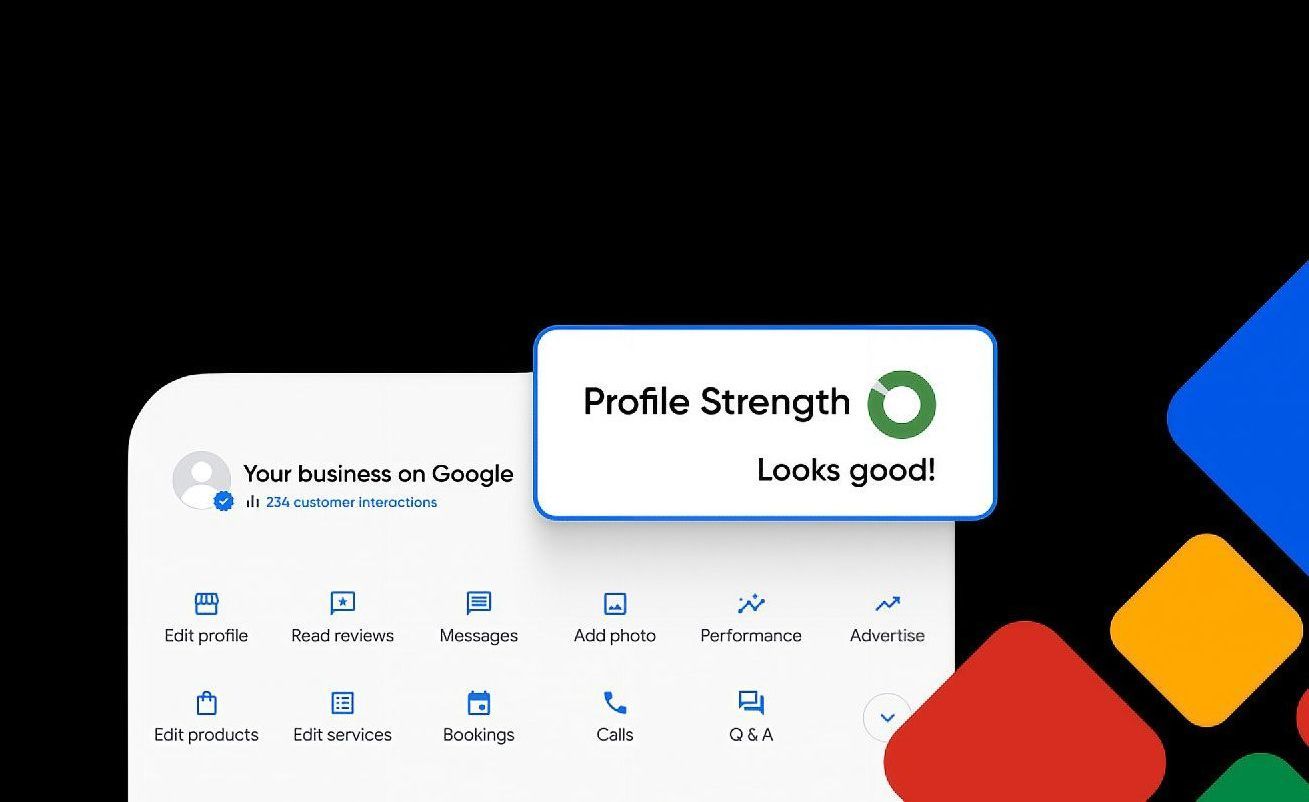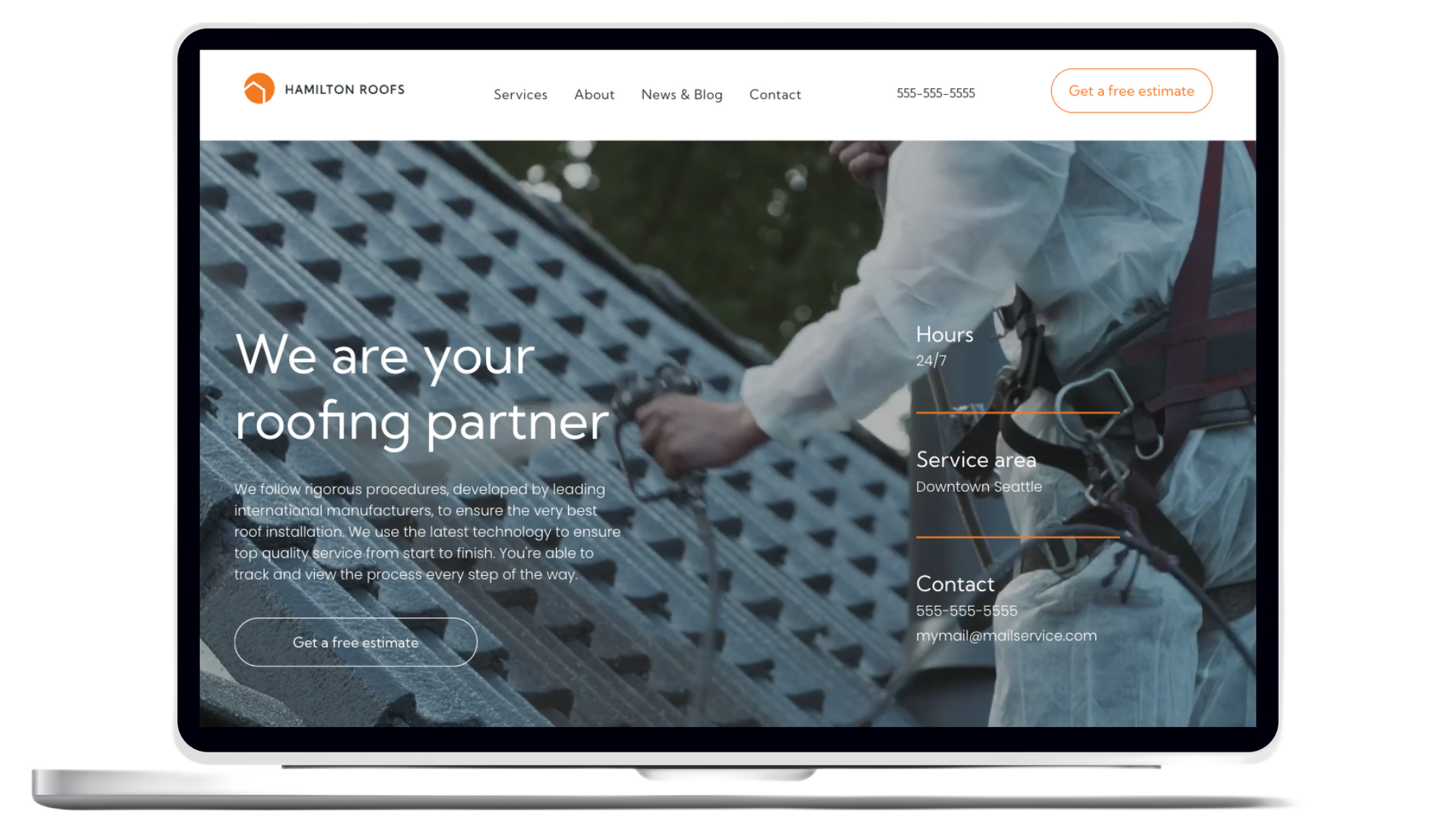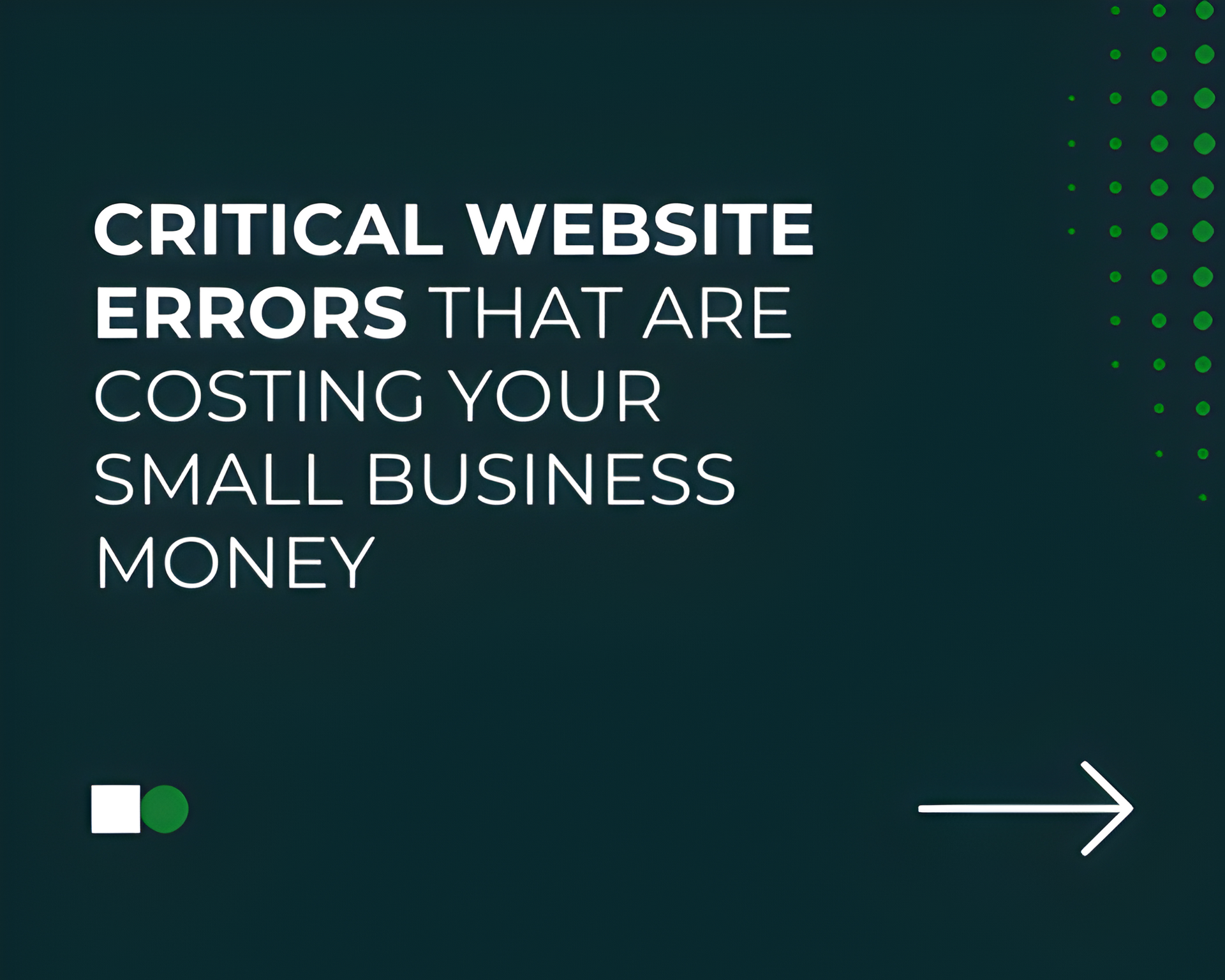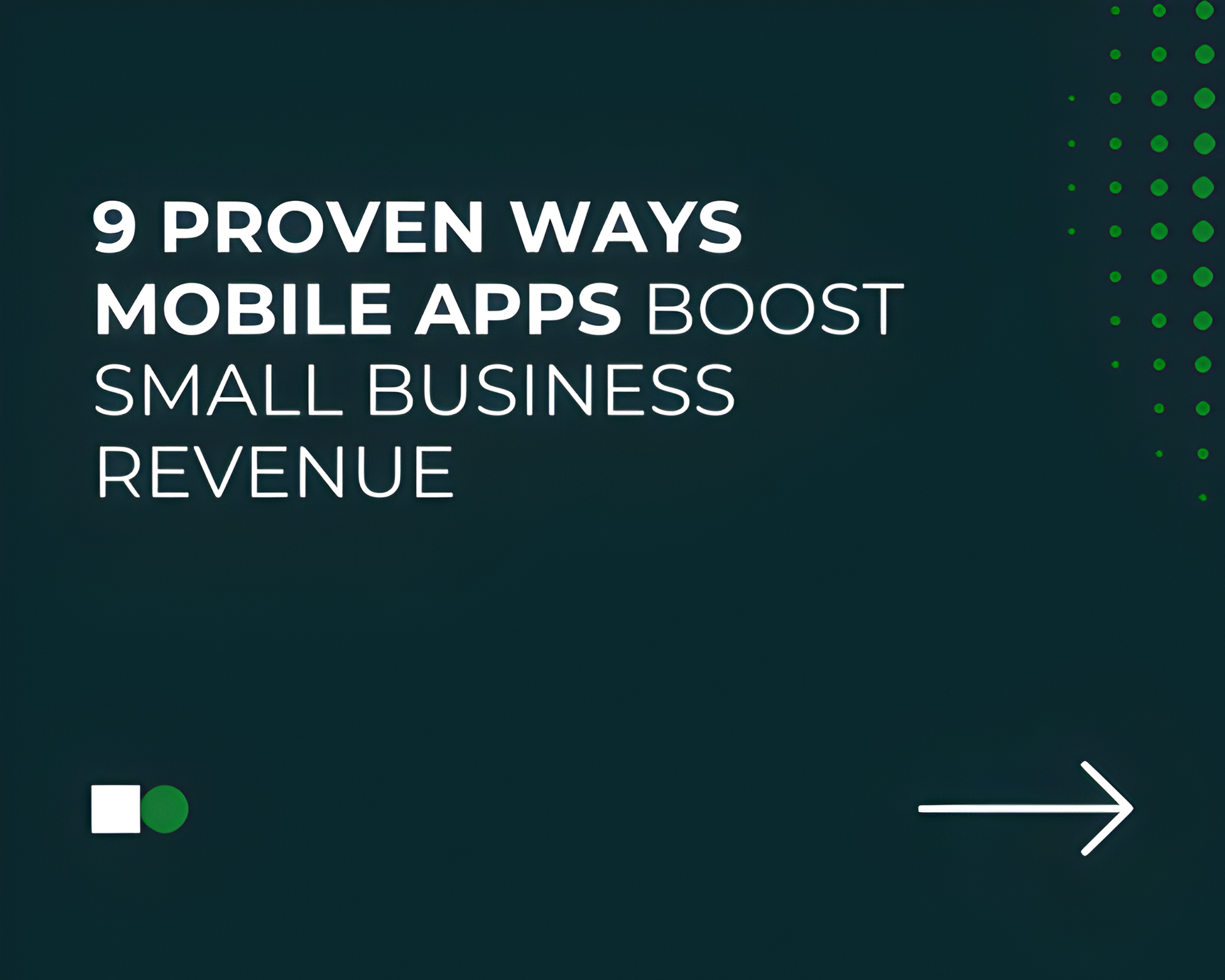Web Design
Professional websites for small businesses in Melbourne
All of our websites are custom developed, SEO optimized with fast load speeds. Specifically for small businesses.
Services
How we help small businesses grow
We focus on the digital stuff that small businesses don't have time for so they can focus on what they're good at.
Web Design & Marketing Blog
Read our blogs to help you grow your online presence
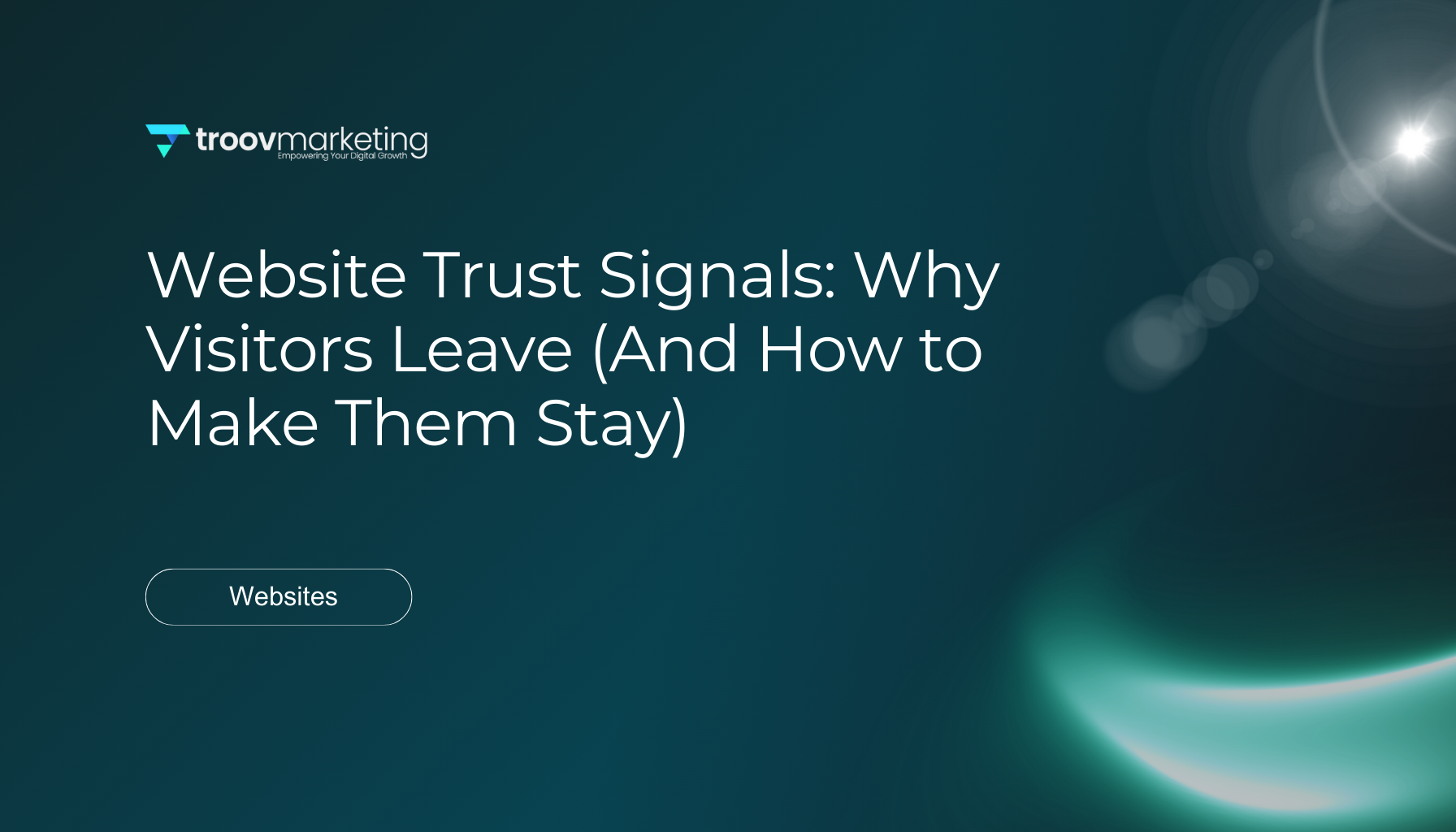
Your website's credibility hangs in the balance. Visitors make snap judgments about it within 0.5 seconds of landing on your page. Website trust signals now determine whether potential customers stick around or leave. Trust stands as the cornerstone of conversion in today's digital world. Trust signals show your website's legitimacy and reliability to visitors. So, these website trust symbols have become crucial for business success as consumers demand more transparency. The numbers tell the story - 58% of marketers say quality content drives their sales and revenue directly. This proves how trustworthy websites lead to better business results. This piece walks you through why people leave websites and how you can use trust signals that work. You'll learn specific techniques to turn casual browsers into loyal customers. Security matters more than ever - 50% of the web now runs on HTTPS. But simple security measures are just the start. Let's explore what really makes visitors stay and connect with your brand. What Are Website Trust Signals? Trust signals work like digital credibility markers that show visitors your website is legitimate and safe. Your potential customers always check if they can trust your business—even if they don't realize it. Definition and purpose of trust signals Website trust signals are visual and textual elements that build confidence in your brand. They confirm your credibility and reliability to site visitors. These digital trust cues include security badges, customer testimonials, professional design elements, and transparent policies. They work just like a firm handshake or a well-maintained storefront—showing that you're legitimate and trustworthy. These signals have a simple goal: reducing uncertainty. Nearly 43 million UK adult internet users have experienced online scams. Visitors approach new websites cautiously. Trust signals provide external validation and tell potential customers, "You can trust us; others have, and here's the proof". These signals generally fall into three main categories: Conversion triggers that encourage visitors to complete purchases External trust builders that drive visitors to your website Technical signals that may go unnoticed by users but affect search rankings Why trust is the first principle of conversion "Trust is the first principle of conversion," as industry expert Alex O'Byrne puts it. This isn't just marketing talk—it's vital to online business success. Even the most compelling products and beautiful websites struggle to convert visitors without trust. Shopping psychology is clear, whether online or in-person—it's emotional. Trust shapes how people make decisions. Potential customers become much less likely to buy when they feel uncertain about your brand or worry about their personal data. Small businesses face this challenge more often. SEO consultant Danny Richman points out that businesses without household names must work harder to overcome visitor hesitation. Clear trust signals help reduce perceived risk. How trust impacts bounce rate and engagement Visitor behavior changes based on trustworthiness. Missing or poorly implemented trust signals lead to high bounce rates—visitors leave without exploring your content or offerings. Research shows how just one trust signal like website speed makes a difference. A 1-second delay cuts conversions by 7%, while a 5-second delay can reduce your conversion rate by half. A study with 221 participants found that complex layouts and pop-ups trigger distrust. Users judge your site from the moment they land on it. They leave quickly without visible trust indicators like security certificates or professional design elements. High bounce rates show that visitors don't find value or face obstacles. Third-party customer reviews are game-changers for bounce rates and conversions. Research shows 61% of EU consumers trust brands more with good Trustpilot scores. The math adds up: better trust leads to lower bounce rates, improved engagement, and more conversions. Secure visitors stay longer, explore more pages, and take action. 8 Website Trust Signals That Make Visitors Stay These eight trust signals are the foundations of digital credibility that turn cautious browsers into confident customers. Let's take a closer look at what keeps visitors on your website. 1. Secure HTTPS and visible privacy policies A small padlock icon in your browser bar tells a big story. This symbol shows SSL encryption , which creates a secure connection between users and your website. Studies show that 60% of consumers leave a site that takes more than three seconds to load. They're even more likely to abandon it if security indicators aren't visible. Privacy policies have become powerful tools to build trust. Good policies use simple language instead of legal jargon. They should explain data collection methods, security measures, and user rights clearly. You can show transparency by putting these policies in your site footer and checkout process. This matters because 84% of customers consider transparency crucial in their buying decisions. 2. Clean, modern, and mobile-friendly design People form first impressions quickly. A clean layout with easy navigation creates what psychologists call "processing fluency" - the mental ease that builds natural credibility. White space helps reduce mental strain. The consistent style of buttons, fonts, and UI elements creates a unified experience. Mobile devices generate more than 55% of global web traffic. This makes responsive design crucial. Your site should look professional on any device. Research shows that 75% of users base a company's credibility on website design. 3. Real team photos and authentic branding Stock photos don't work anymore. Real team photos create emotional connections and add a human element to your brand. This personal touch matters more than ever in our tech-heavy world. These photos can highlight your organization's diversity and show your commitment to inclusion. A strong brand identity builds trust through familiarity. Your branding should stay consistent across your website, social media, and marketing materials. This visual harmony guides users to important elements. Real visual presentation creates genuine connections beyond sales. 4. Clear and helpful product or service descriptions Product descriptions start the conversation between your brand and potential customers. Good descriptions should be helpful and informative - never pushy. Instead of using empty words like "high quality" or "long-lasting," give specific details that show product expertise. The best descriptions answer unasked questions about problem-solving, functionality, and expected results. Adding sensory details helps readers picture themselves using the product. Research indicates that specific benefit descriptions score 68% higher in trust compared to generic claims. 5. Customer testimonials and third-party reviews Social proof remains one of the strongest trust builders. Research shows that 72% of customers say positive reviews directly influence their trust in a company. Testimonials trigger what psychologists call "social validation" - people trust others' judgments. Third-party reviews carry extra weight because they seem unbiased. Almost everyone checks reviews before buying online, with 98% calling them an "essential resource". Eye-tracking studies found that easy-to-scan testimonials got 74% more attention than traditional formats. 6. Awards, certifications, and trust badges Trust badges on websites reduce perceived risk and encourage purchases. Security badges, payment icons, and third-party endorsements show visitors their information stays safe. Industry certifications prove your dedication to quality. Better Business Bureau accreditation can boost conversion rates. Studies reveal that 82% of consumers trust award-winning businesses more. These visual signals show expertise without long explanations. 7. Educational content and FAQs Educational content makes your brand a trusted advisor rather than just another seller. Helpful tips and resources show your expertise and build authority in your field. FAQs tackle common questions head-on and smooth out the buying process. Clear answers show you understand customer concerns and value transparency. This builds what psychologists call "cognitive integrity" - a sense that everything fits together logically. 8. Fast load times and no broken links Page speed affects trust directly. Google's research shows that slow loading creates lasting negative impressions. Users are 38% more likely to label slow organizations as "out of touch" or careless. Every moment counts. Each second of delay cuts conversions by 7%. Amazon found that a tiny 100-millisecond delay reduced their sales by 1%. Quick loading times and working links signal competence that extends beyond your website to your entire business. Why Visitors Leave: Common Trust Breakers A website's success depends on understanding what drives visitors away, not just what keeps them around. Missing trust signals create what I call "trust breakers" - elements that send potential customers running to your competitors. Outdated design or broken elements Your website's outdated design does more than look bad - it destroys visitor confidence. Studies show that 66% of users stick around on a visually attractive webpage . This means you could lose a third of your potential customers based on looks alone. A website that looks stuck in the past makes visitors question if your business practices are outdated too. Blue Fountain Media's survey reveals that 81% of internet users lose respect for businesses with outdated websites. Bad looks aren't the only problem. Broken features destroy trust right away. Dead links, forms that don't work, and error messages kill any chance of turning visitors into leads. These technical problems signal that your business might be sloppy in other areas too. Lack of transparency or vague messaging Modern consumers want businesses to be real and clear. Your website pushes visitors away by using unclear messages or hiding important details. Many businesses make the mistake of drowning users in information. The truth is, clear communication works better with less content. Being transparent has become essential in digital marketing. Customers now look for businesses that share their values and communicate them clearly. Unclear policies, hidden costs, or confusing service descriptions make visitors hesitate and leave. Transparency shows you have nothing to hide and proves you believe in what you offer. Overuse of stock images or fake reviews Stock photos hurt visitor trust. These generic images feel fake and push potential customers away. Visitors spot stock photos easily and see your business as unoriginal. Numbers back this up - customers are 35% more likely to convert on offers with real photos versus stock images. Stock photos miss that personal touch that shows your brand's true identity, making it hard for customers to connect. The same goes for reviews. Fake testimonials cause lasting damage once customers spot them. In a digital world where 72% of customers depend on reviews to decide, authentic testimonials matter more than ever. Slow site speed and poor mobile experience Nothing drives visitors away faster than a slow website performance . Research shows 47% of consumers want pages to load within 2 seconds. Each extra second of loading cuts conversions by 7%. The damage adds up fast: BBC lost 10% of users for each extra second of loading time 53% of mobile users leave sites taking over 3 seconds to load Amazon saw a 1% drop in sales from just a 100-millisecond delay Mobile optimization has become essential. About 60% of visitors use mobile devices, so a poor mobile experience turns away most potential customers. Mobify reports that 30% of mobile shoppers abandon purchases on sites not built for mobile. Today's digital world offers endless choices. These trust breakers don't just annoy visitors - they send them straight to your competition. How to Build Trust Through Content Your website content serves as a digital handshake that builds credibility and trust with visitors. A well-crafted content strategy welcomes users and addresses their concerns before they ask questions. Use plain language and avoid jargon Plain language builds trust by making information available to everyone. The law requires federal agencies to communicate clearly, which shows how this principle works for effective communication. Your trust-building content should: Choose everyday words over complex terminology Use active voice with clear "actors" in your sentences Put important details first, following the "front-loading" principle Make content available to readers aged 12-14 Research proves that jargon creates barriers between you and your audience. Technical terms might be necessary in certain industries, but brands should use simple language where possible to connect with customers. This direct approach shows respect for your visitors' time and attention and creates immediate goodwill. Create helpful blog posts and guides Educational content makes your brand a trusted advisor rather than just another seller. Your main goal should be to provide value that changes readers' lives, even in small ways. Ask yourself before writing: "How will I change my reader's life today?". This viewpoint moves your approach from self-promotion to genuine help. Readers recognize this value-focused approach and trust your expertise more. Your unique viewpoints as a thought leader strengthen credibility. Give readers compelling reasons to choose you by offering groundbreaking solutions or challenging common misconceptions. Answer common questions proactively A good FAQ page improves customer satisfaction by offering quick information access and reducing support requests. This approach shows that you understand customer concerns and value transparency. Your FAQ content should build trust by showing product expertise and strengthening your authority position. Detailed, honest answers to potential concerns help visitors trust your business more. Great FAQs should be brief, hosted by topic, with search features for quick information finding. Regular updates based on real customer questions show your dedication to meeting visitor needs. Showcase your process or methodology Sharing your processes creates strong trust connections. Customers prefer working with companies they understand, and clear methodologies remove doubts. Personal stories make your brand more human than automated content ever could. Your experiences are unique—something AI can't copy—and they help build real connections. These stories prove there's a real person behind the screen who understands customer challenges. Being open about areas where you're still learning or making mistakes actually builds more trust. This honesty shows confidence in your expertise while displaying authenticity that strikes a chord with visitors. Using Social Proof to Build Credibility Social proof is one of the most powerful website trust signals you can use. Your potential customers will trust you more when they see others having positive experiences with your business. How testimonials influence decisions Testimonials shape buying behavior through psychological validation. 72% of customers trust a business more after reading positive testimonials . This trust shows real results - positive testimonials on sales pages boost conversion rates by 34%. Why do testimonials work so well? They show " trust through experience " – proof that real people benefit from your product or service. Your satisfied customers become brand ambassadors, which works better than your own marketing claims. Jacquelyn Van Sant puts it well: "Positive reviews do more for building trust with potential clients than anything you say yourself". The role of third-party review platforms People see third-party review platforms as unbiased, which gives them exceptional credibility. Reviews on independent platforms seem more trustworthy than those on your website. This explains why 88% of consumers trust online reviews just as much as personal recommendations . These platforms help you: Build consumer confidence in your reliability Boost your online visibility on different platforms Shape search engine results potentially Your responses to reviews, especially negative ones, show you care about customer feedback. This approach reduces damage to your reputation while showing you're accountable. Displaying client logos and case studies Client logos build instant credibility through visual association. Your business gains trust when visitors spot familiar brands you've worked with. This "borrowed credibility" makes sense - new prospects feel safer working with someone that established companies already trust. Case studies prove your capabilities better than logos alone. Unlike testimonials that simply say "They were great," case studies show "Here's what they did, how they did it, and the results they got". This detailed approach shows the connection between what you promise and what you deliver. The best case studies tell a story: challenge, process, results, and testimonial. Adding visuals makes these stories more powerful and builds trust better than text alone. Technical Trust Signals That Matter Technical elements work silently to shape visitor trust beyond esthetics and content. These behind-the-scenes components are the foundations of website credibility that determine whether visitors stay long enough to convert. SSL certificates and secure checkout Security creates confidence. The padlock icon or "https://" in your URL shows visitors their connection stays encrypted and protected. This visual reassurance is vital—hackers target over 30,000 websites daily. Visible security indicators have become essential trust signals. SSL certificates verify your website's identity and enable encrypted connections between servers and users. Your e-commerce site's secure checkout processes give customers peace of mind about their personal and financial details. Your site's technical trust grows stronger with security badges, 3D Secure payments, and PCI DSS compliance. Accessibility and usability best practices Australia's population includes 20% of people living with disabilities. This makes accessibility a vital trust element. Web Content Accessibility Guidelines (WCAG) showcase your steadfast dedication to accessible design through four key principles. Your content must be perceivable, operable, understandable, and robust. You can implement these principles by adding alt text to images, enabling keyboard navigation, designing readable forms, and maintaining proper color contrast. These practices demonstrate your attention to detail and respect for all users. Consistent updates and error-free navigation Regular website maintenance prevents security issues while boosting performance. Your visitors lose trust when they encounter outdated content, broken links, and server errors. They connect unresponsive websites with poor customer support. A stable, technically sound website reflects your organization's reliability. Your entire business operations benefit from a foundation of trust built through regular updates, error monitoring, and performance optimization. Conclusion Trust isn't optional anymore when it comes to winning website visitors—it's crucial to help your business survive and grow. Trust signals work as digital proof of credibility that turn doubtful visitors into loyal customers. These signals work like silent salespeople on your website. They show visitors you're legitimate before you even make your pitch. Businesses that use these signals well gain a strong edge over competitors. Good trust starts with the basics: HTTPS encryption and clear privacy policies. It grows through professional design, real photos, and straightforward communication. Your marketing claims can't match the power of social proof like customer reviews and testimonials. The technical side matters too. Quick loading times, smooth navigation, and mobile-friendly design show how reliable your business is. You should tackle these elements right away instead of leaving them for later. Your visitors will leave quickly if they spot trust-breaking elements. Old designs, unclear messages, fake reviews, and slow websites can destroy trust in seconds. Knowing these problems helps you avoid them. Clear, honest content that speaks to your audience makes a huge difference. Good blog posts, detailed FAQs, and clear process guides make you a trusted advisor instead of just another seller. Start using these trust signals today—even small changes can make a big difference. In today's digital world, people can find alternatives with one click. Trust decides whether visitors stay or leave. Your dedication to building trust won't just keep visitors on your site—it will boost sales, create loyal customers, and help your business grow steadily. Key Takeaways These essential trust signals can transform your website from a visitor repellent into a conversion magnet that builds lasting customer relationships. • Trust forms in 0.5 seconds - Visitors judge your credibility instantly, making first impressions critical for keeping potential customers engaged. • Security signals are non-negotiable - HTTPS encryption, SSL certificates, and visible privacy policies provide the foundation that 72% of customers need to trust your business. • Authentic content beats stock imagery - Real team photos and genuine testimonials increase sign-ups by 35% compared to generic stock images and fake reviews. • Speed equals trust - Every 1-second delay in loading reduces conversions by 7%, while mobile optimization is essential for the 60% of visitors using mobile devices. • Social proof drives decisions - Customer testimonials and third-party reviews influence 88% of consumers as much as personal recommendations, making them powerful conversion tools. The bottom line: Trust isn't just about looking professional—it's about creating a seamless, secure, and authentic experience that addresses visitor concerns before they even voice them. When you combine technical reliability with genuine social proof and transparent communication, you transform casual browsers into confident customers. FAQs Q1. How quickly do visitors form opinions about a website's credibility? Visitors form opinions about a website's credibility within just 0.5 seconds of landing on the page. This highlights the importance of making a strong first impression with clear trust signals. Q2. What are some key website trust signals that can help retain visitors? Important trust signals include secure HTTPS connections, clean and mobile-friendly design, authentic team photos, clear product descriptions, customer testimonials, trust badges, educational content, and fast load times. Q3. Why is website speed important for building trust? Website speed is crucial because it directly impacts user experience and perception. Every one-second delay in page loading can reduce conversions by 7%, and slow-loading sites are often perceived as less trustworthy and competent. Q4. How effective are customer testimonials in building trust? Customer testimonials are highly effective, with 72% of customers reporting that positive reviews make them trust a business more. Testimonials provide social proof and can increase conversion rates on sales pages by up to 34%. Q5. What role does content play in establishing trust with website visitors? Content plays a vital role in building trust by demonstrating expertise and providing value. Using plain language, creating helpful blog posts and guides, proactively answering common questions, and showcasing your processes can position your brand as a trusted advisor rather than just a seller.
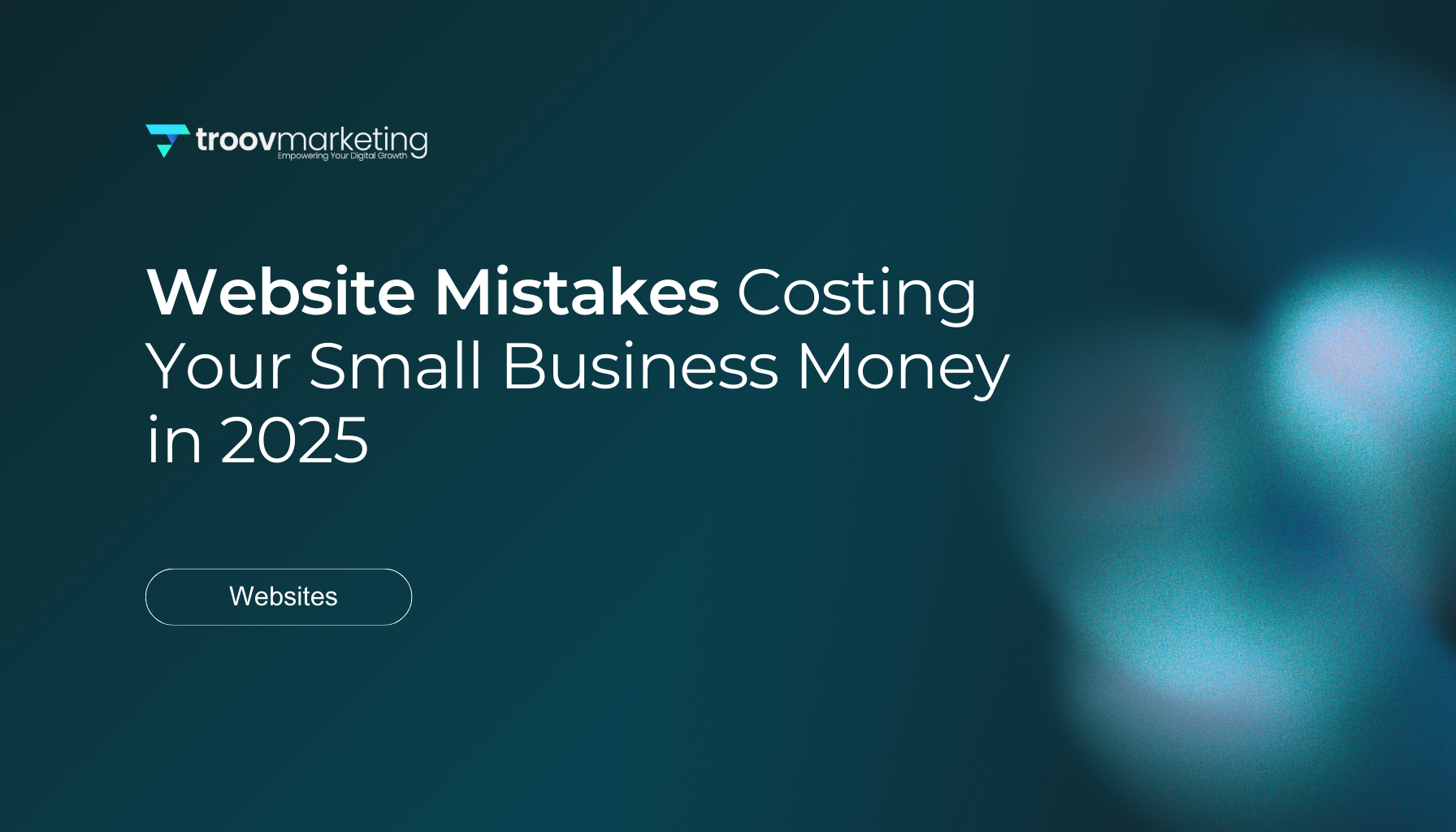
Website mistakes can crush your business profits. Mobile devices now generate over 60% of website traffic, but many small businesses still ignore mobile optimization. Users won't wait - 53% leave a site that loads longer than three seconds. Your conversion rates drop by 7% for each second of delay[-2]. Small business owners often make website mistakes that do more than just annoy users - they chase away potential customers. The numbers tell a clear story: visitors are 5 times more likely to abandon a non-mobile-friendly website. This hits your revenue hard. This piece will show you the website mistakes that could quietly eat away at your 2025 profits. We'll look at everything from fuzzy business goals and poor design choices to technical problems and missed chances to optimize your site. Not Having a Clear Website Goal Small business owners often rush to build a website without knowing what they want to achieve. This mistake can cost them dearly. A website needs to be more than just a digital brochure - it should be a powerful tool that propels development and generates revenue. Why purpose matters for small business websites A website without purpose resembles driving without a map. You might get somewhere, but you'll waste time, energy, and money. Your website should be a vital part of your overall business strategy. Sites that lack clear direction waste resources, miss opportunities and don't generate enough leads. Clear goals help you make better decisions about content, layout, and functionality. You need to understand what you want your website to achieve before thinking about design elements or platforms. This approach will give a website that works toward specific business goals instead of just looking good. Common signs your site lacks direction Your website might be falling behind and losing you business if you notice these warning signs: Your website doesn't show what your business currently does (new services or team members aren't featured) Business developments and website content don't match Your site attracts traffic from markets you don't target You showcase credentials more than solving customer problems The website design doesn't line up with your broader business goals There's another reason to worry - spending money on traffic without seeing conversions. It's like pouring water into a leaky bucket. Traffic is the water, and conversion is the bucket. More marketing spend won't help if your website doesn't have a strong purpose. How to define your website's main objective You should understand your overall business goals before you start a journey of website optimization. Your business goals need to line up with what you want your website to achieve. Ask yourself these basic questions: What does my business want to achieve? How will my website meaningfully contribute to that goal? Who is my target audience and what are their needs? After answering these questions, turn your business goals into specific website objectives using the SMART framework—make them Specific, Measurable, Achievable, Relevant, and Time-bound. Don't set vague goals like "increase sales." Instead, aim for "increase qualified leads by 25% within six months of launch." Note that your website can serve multiple purposes. It can be a digital shopfront, help reach global audiences, boost customer engagement, target new markets, improve brand reputation, or share product information. All the same, these goals should connect to your business plan, marketing plan, digital strategy, and your target market's needs. Design Mistakes That Hurt User Experience Your website's design can build or destroy user trust instantly. A poorly designed site will drive potential customers to your competitors, even if you have clear goals. Let's look at the design mistakes that quietly eat away at your small business revenue. Inconsistent branding and layout Visitors get confused immediately when they see disjointed visual elements. Your business loses trust and credibility when your branding isn't consistent across your website. This doesn't just weaken your brand recognition—it actively hurts your reputation and how customers see you. Users wonder if they're still on the same site when typography, color schemes, and logo placement change between pages. Research shows your brand's consistency goes beyond logos and slogans—it includes everything customers see before, during, and after buying. You need visual uniformity throughout your site to create an experience that builds customer confidence rather than destroying it. Poor mobile responsiveness The costliest website mistake in 2025 is failing to optimize for mobile devices. Your website needs to work perfectly on all screen sizes since mobile devices now make up over 60% of global web traffic. The numbers tell the story clearly. Mobile users will leave sites that take more than 3 seconds to load 53% of the time. Half of them will exit completely if your site isn't mobile-friendly. About 40% will check out your competition instead. Google has made mobile responsiveness a key ranking factor since 2025, which means non-responsive websites now rank much lower in search results. Cluttered navigation menus Website navigation has one golden rule: don't make people think. Many small businesses still stuff their menus with too many choices, creating what experts call "choice paralysis". Your bottom line takes a direct hit when visitors get frustrated by confusing navigation. Here are common navigation mistakes that chase visitors away: Menus with more than 7-8 items Multiple levels of dropdown menus Menu labels using internal jargon instead of clear terms Navigation elements that look different across pages The old "three-click rule" isn't gospel anymore, but its message still rings true—visitors should find key information easily. Your bounce rate goes up when potential customers give up searching for what they need. Low-quality or irrelevant images Images on your website shape purchase decisions more than you might think. Studies show content with quality images gets 94% more views than those without. Gen Z and Millennials are twice as likely to buy something based on online images compared to older generations. Customers can spot generic stock photos easily, and these make your site seem less trustworthy. Your brand's credibility suffers when you use poor quality or irrelevant images—this hits small businesses trying to build authority especially hard. Your images do more than just look pretty—they show your brand's personality, trigger emotions, and get information across quickly. The right pictures can help you build trust with potential customers or lose them forever. Technical Issues That Drive Visitors Away Technical website problems lurk behind every abandoned shopping cart and high bounce rate. These issues quietly drive potential customers away and hurt your bottom line in ways many small business owners don't realize. Slow loading times and large image files Customer patience runs thin in today's digital world. Research shows 47% of customers want webpages to load in 2 seconds or less. This isn't just about convenience - it affects your profits directly. Studies show how conversion rates drop as pages take longer to load: Pages loading in 2.4 seconds achieve a 1.9% conversion rate At 3.3 seconds, conversion rates fall to 1.5% By 5.7+ seconds, conversion rates drop to just 0.6% Small businesses with $10 million in annual sales can boost revenue by 2% for each second they shave off load time. Images make up to 75% of a page's weight. Many small businesses make the mistake of using large, uncompressed images on their websites. You can fix this by using image compression tools like TinyPNG or ImageOptim to reduce file sizes without quality loss. It helps to save images in the right format—JPEG for photos, PNG for graphics with fewer colors. You should also set up lazy loading so images load only when users scroll to them. Broken links and outdated plugins Users lose trust quickly when they click a link and see the "404 - Page Not Found" error. Broken links tell users and search engines your site is neglected, which leads to lower search rankings. These errors push potential customers away, raise bounce rates, and cost e-commerce businesses money. Several tools make finding broken links easy. WordPress users can add the Broken Link Checker plugin to scan their entire site for broken links. Google Search Console helps spot crawl errors like 404 pages and updates its data about every 24 hours. Outdated plugins create both performance and security risks. Websites collect "code bloat" over time from unused CSS, extra JavaScript, and old plugins. This slows down your site and frustrates users. Lack of mobile optimization Poor mobile optimization might be the most expensive website mistake in 2025. Mobile devices generate over 50% of global web traffic. A mobile-friendly design is no longer optional. Google ranks websites based on their mobile page speed. Sites that perform poorly on mobile devices rank lower in all searches, not just mobile ones. The stakes are high - users abandon more than half of mobile visits when pages take over three seconds to load. Mobile users want to browse without pinching, zooming or endless scrolling. Features like horizontal scrolling, tiny checkboxes, and clunky drop-down menus send mobile users straight to your competitors. Small businesses can see big returns in user satisfaction and revenue by fixing these technical basics. Even small improvements in these areas make a difference. Missing Key Elements That Build Trust Trust builds the foundation of online success. Many small businesses damage their credibility through basic website mistakes. Several significant elements directly affect whether visitors trust you enough to become customers, beyond technical performance and looks. No clear call-to-action (CTA) Vague or missing calls-to-action leave potential customers without direction. Strong CTAs guide visitors naturally and show value while clearing confusion about next steps. Your sales potential takes a hit when CTAs don't exist or work poorly. A CTA should be: Crystal clear about what happens next Straight to the point without vague language Easy to spot with contrasting colors Placed at key points throughout your customer's trip Note that CTAs do more than push for connections—they remove doubt from your visitor's experience. This matters even more for small businesses where each lead counts. Lack of social proof like reviews or testimonials Small businesses lose opportunities without doubt when they ignore social proof. Potential buyers look for validation from others before making decisions. Numbers tell the story: 84% of people trust online reviews as much as recommendations from friends and family 98% of shoppers read reviews before buying Reviews can boost conversion rates by up to 270% Websites with testimonials earn up to 62% more revenue Reviews work best when they include real names, faces, and job titles instead of anonymous praise. Using both internal testimonials and third-party platforms like Trustpilot or Google Reviews builds multiple layers of trust. Missing legal pages and contact details You wouldn't trust someone who hides information, so why should customers trust your business without proper disclosure? Missing contact details and legal pages raise red flags for visitors. Your small business website needs these pages: Privacy Policy (legally required for most businesses) Terms & Conditions/Terms of Use Clear contact information (phone, email, physical address) Return/Refund Policy Shipping information (for e-commerce) Hiding behind vague contact forms or skipping legal policies doesn't just hurt trust—it might break regulations depending on your business type. Visitors look for these elements as trust signals, especially with new businesses. Clear contact information in utility navigation and legal pages in your footer creates transparency that builds instant credibility with potential customers. Ignoring SEO and Local Visibility A website's beautiful design means nothing if customers can't find it. Small businesses continue to make costly mistakes by ignoring search engine visibility in 2025. No keyword strategy or meta descriptions Your business becomes invisible online without researching how customers search for products. Google searches show local intent 57% of the time, yet many small business websites lack simple keyword optimization. The success of your online presence depends on understanding the terms your potential customers use. Meta descriptions still play a significant role in click-through rates, though they haven't directly affected rankings since 2009. The surprising fact is that 25% of top-ranking pages don't customize their meta descriptions. This gives Google full control over displayed text - something that happens 62.78% of the time. Not optimizing for local search Local SEO helps your business show up when nearby customers search for your services. Missing out on "near me" searches means you lose qualified customers who are ready to buy. The numbers paint a clear picture - 62% of consumers skip businesses without an online presence. Local businesses need to appear in Google's map pack because 72% of consumers visit stores within five miles after a local search. Inconsistent business information across platforms Wrong business information online creates major visibility issues. Trust matters - 80% of consumers lose faith in local businesses when they find incorrect contact details online. Your name, address, and phone number (NAP) must stay similar across your website, Google Business Profile , and online directories. These differences do more than confuse customers—they hurt your local search rankings directly. Conclusion Small businesses lose more than just visitors when their websites have mistakes - these errors directly affect their bottom line. This piece highlights crucial areas where many small business owners damage their online presence without even knowing it. A website without purpose acts like a digital brochure instead of a business tool. Your site needs to line up with specific business goals to get real results. Poor design choices erode visitor trust before you can make your pitch. Cluttered navigation, inconsistent branding, and low-quality visuals push potential customers away. Technical problems create another huge barrier. Slow loading times can cut conversion rates in half. Broken links and outdated plugins show neglect to visitors and search engines alike. Without doubt, mobile optimization is essential in 2025 - mobile devices now account for over 60% of all traffic. Trust elements make a huge difference in turning visitors into customers. Clear calls-to-action, real testimonials, and proper legal pages might look like small details. Local SEO decides whether potential customers can find your business at all. Here's the good part - these website issues have simple fixes. Small changes can lead to big gains in customer satisfaction and revenue. Your website should be your best 24/7 salesperson, not something that drives customers away. Note that your competition is just one click away. Fixing these common issues will change your website from a liability into a powerful asset that brings in leads and sales through 2025 and beyond. Key Takeaways Small business websites are silently bleeding money through preventable mistakes that drive away potential customers and hurt search rankings. • Define clear website goals - Without specific objectives, your site becomes a digital brochure instead of a revenue-generating business tool • Prioritize mobile optimization - 60% of traffic comes from mobile devices, and 53% of users abandon sites taking over 3 seconds to load • Fix technical issues immediately - Slow loading times can reduce conversions by 7% per second delay, while broken links signal neglect to search engines • Build trust with social proof - Displaying reviews and testimonials can increase conversion rates by up to 270% and revenue by 62% • Optimize for local search - 72% of consumers who perform local searches visit a store within five miles, making local SEO crucial for foot traffic These website mistakes aren't just user experience problems—they're direct threats to your bottom line. The good news is that most have straightforward solutions that can transform your website from a liability into your most effective 24/7 salesperson. FAQs Q1. How important is mobile optimization for small business websites in 2025? Mobile optimization is crucial in 2025, with over 60% of web traffic coming from mobile devices. A mobile-friendly website is essential for user experience and search engine rankings. Failing to optimize for mobile can result in high bounce rates and lost customers, as more than half of mobile users abandon sites that take over three seconds to load. Q2. What are some key elements that build trust on a small business website? Key trust-building elements include clear calls-to-action (CTAs), customer reviews and testimonials, and easily accessible legal pages and contact information. Displaying authentic social proof can increase conversion rates by up to 270%, while prominently featuring contact details and legal policies creates transparency and credibility with potential customers. Q3. How does website loading speed affect a small business's bottom line? Website loading speed directly impacts conversions and revenue. A one-second delay in page load time can reduce conversions by up to 7%. For a small business generating $10 million in annual sales, each second of improved load time can potentially increase revenue by 2%. Fast-loading pages are crucial for retaining visitors and improving overall user experience. Q4. Why is local SEO important for small businesses? Local SEO is vital because it helps businesses appear in "near me" searches and Google's map pack. This is crucial as 72% of consumers who perform a local search visit a store within five miles. Additionally, 62% of consumers ignore businesses without an online presence. Optimizing for local search ensures visibility to nearby customers who are ready to make a purchase. Q5. What are common design mistakes that hurt user experience on small business websites? Common design mistakes include inconsistent branding and layout, poor mobile responsiveness, cluttered navigation menus, and low-quality or irrelevant images. These issues can confuse visitors, erode trust, and drive potential customers away. Maintaining visual consistency, simplifying navigation, and using high-quality, relevant images are essential for creating a positive user experience that converts visitors into customers.
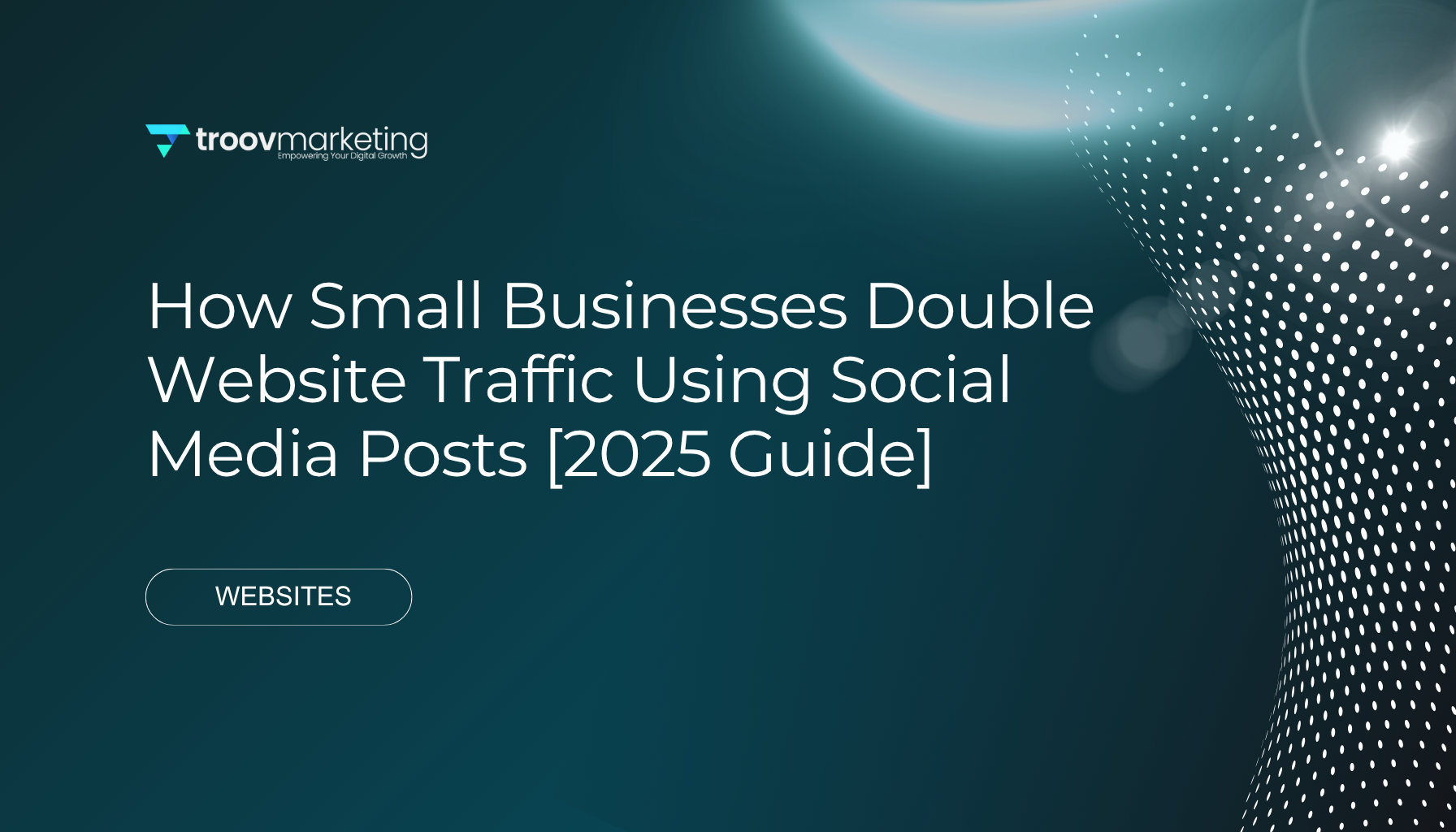
Is your website struggling to get visitors from social media posts? You're not alone. 63% of small businesses say getting steady website traffic is their biggest digital marketing challenge. But here's the good news - almost 60% of people worldwide use at least one social media platform, which creates amazing chances to reach potential customers. People spend about two hours and 23 minutes on social media every day. This makes it perfect timing to build a resilient social media content strategy. Small businesses in Australia face tough competition among 2.7 million active businesses. A social media content plan isn't just nice to have - it's vital for success. Brands need authentic and relatable content to connect with their audience. This piece shares tested ways to boost your media traffic. We've created this resource to help small businesses double their website visitors through compelling social media posts and advanced strategies. Your social content can bring traffic to your site and turn visitors into paying customers. Build a Strong Social Media Content Plan A well-laid-out framework for your social media efforts should be in place before you start posting random content. A well-crafted social media content plan will give a clear path to success, and every post will contribute meaningfully to your business goals. 1. Define your audience and goals The path to social media marketing success starts with knowing your audience. You should identify your target audience's demographics, interests, and online behaviors instead of casting a wide net. Research shows that understanding your audience plays a vital part in selecting the right social media platforms. Your social media efforts should line up with your broader business objectives. Do you want to boost brand awareness, drive website traffic, or increase sales? Your goals should follow the SMART framework—specific, measurable, achievable, relevant, and time-bound. To name just one example, see how "increase Instagram followers by 15% over the next quarter" works better than just wanting "more followers". 2. Choose the right platforms Small businesses often make the mistake of spreading themselves too thin by trying to be present on every social media platform. Your focus should be on platforms where your target audience spends time. Businesses that market on the right platforms see a two to five percent increase in annual online sales. The key questions are: Who do you want to reach? Which platforms do they prefer? LinkedIn might be your go-to platform for reaching business professionals, while Instagram or Pinterest could work better for visual businesses. Start with two or three platforms that best match your audience and business type before expanding. 3. Plan content types and formats Your content needs variety to keep your audience interested. Social media experts say short-form videos, images, live videos, user-generated content, and text-based posts get the most engagement. It also helps to have content that serves different purposes: Educational content (tips, tutorials, how-to guides) Entertaining posts (memes, trends, relatable stories) Promotional content (product launches, special offers) Community-building posts (polls, Q&A sessions) Each platform needs its own tailored content rather than similar posts everywhere. Studies show that 90% of consumers find custom content useful, and 78% believe organizations providing customized content care about building good relationships. 4. Use a content calendar for consistency A steady posting schedule is key to social media success, and research shows it typically boosts revenue by 23%. A social media content calendar makes it easy to plan and schedule posts ahead of time, so you're not scrambling daily. Your calendar should list post dates, times, copy, links, and visual assets. Most platforms work best with 3-5 posts per week. Using a content calendar brings several benefits: Saves time through organization and batch creation Keeps quality and brand voice consistent Makes shared campaign and product launch planning possible Makes performance tracking easier You'll find many tools to create calendars, from free options like Google Sheets to dedicated social media management platforms with scheduling and analytics features. These four foundational elements of a social media content plan will help you create a strategic framework that drives consistent results instead of posting randomly and hoping things work out. The time you spend planning will pay off through better engagement, more website traffic, and more conversions in the end. Quick Wins to Drive Immediate Traffic Looking for quick results from your social media strategy? These proven tactics can boost your website traffic today while your content plan gains momentum. 1. Add website links in bios and stories Your social media bio is prime digital space that guides followers to your website. Instagram now allows up to five links in your bio, but only the first link appears without tapping. The first link gets the most clicks, so put your most important link there. Instagram stories let you drive traffic through link stickers. Any Instagram account can now use this feature. Here's how to add a link sticker: Pick it from the Instagram Stories sticker tray Add your link to the link field Change text and color by tapping the sticker Facebook gives you space for links in both the main bio section and profile settings. Your posts should point people to these links with phrases like "Shop our new collection via the link in our bio!" 2. Use strong CTAs in every post Social media calls-to-action (CTAs) guide readers toward specific actions. Action verbs like "Learn more," "Shop now," and "Join us" spark quick engagement. These words push your audience to act. Place your CTAs at key points: In your bio/profile as a brand introduction Within social media ads to boost conversions In post captions as clear next steps Your conversion rates jump when you create urgency. Phrases like "Don't miss out," "Act now," or "Limited time offer" push users to take action. This works because it taps into the fear of missing out (FOMO), a key driver of consumer behavior. 3. Share time-sensitive offers or events Time-limited promotions can boost your conversion rates significantly. Studies show 60% of consumers buy more quickly when offers have an expiration date. Flash sales can lift conversion rates by 30%, particularly with platform-exclusive deals. Limited-time giveaways and 24-hour promotions boost engagement by 50%. Visual countdown timers in posts and stories work well - 80% of users say they act faster when they see time running out. Time-sensitive offers work because they tap into basic consumer psychology. People want things more when they seem rare or limited. This explains the success of "Lightning Deals" that create shopping urgency. These exclusive deals do more than drive traffic - they build stronger customer relationships. Platform-exclusive offers keep 70% of followers coming back. The key is finding the right balance between urgency and giving people enough time to respond. These quick wins combined with your broader social media strategy will boost your website traffic now while building lasting growth. Content Strategies That Scale Over Time Creating environmentally responsible social media strategies helps your website traffic grow steadily. Quick wins give you immediate results, but flexible approaches ensure your traffic keeps increasing month after month, year after year. 1. Repurpose blog content into social posts Your existing blog content can transform into multiple social media formats to maximize your investment. Research shows that repurposing content helps you optimize efforts and spend while your message stays consistent across different formats. These methods work well to repurpose content: Extract key takeaways as standalone posts Transform listicles into carousel posts (which receive higher engagement than static images) Convert blog sections into thread formats for platforms like X (formerly Twitter) Create stat-based graphics from your research and reports You should plan repurposing during the original content creation phase. Each long-form piece of content should give you at least five social media posts. 2. Create evergreen content with long-term value Evergreen content stays relevant and valuable well after publication. It drives traffic without constant updates. Just like evergreen trees stay green year-round, this content remains useful over time. How-to guides, FAQs, tutorials, glossaries, and "history of" articles make great evergreen content. These resources keep attracting readers and generating results long after publication, so your website traffic grows steadily. On top of that, evergreen social media content helps reduce burnout. You won't feel pressured to create fresh content constantly, and you'll get better returns through repeated exposure. 3. Use video content to boost engagement Video content drives engagement powerfully. Online videos reached 92.3% of internet users worldwide in Q2 2023. About 83% of marketers who use video say it substantially helps them generate leads. Your videos must grab attention in the first few seconds to work well. Most videos should stay under two minutes because social media attention spans run short. Mobile viewing works best with vertical or square formats. Don't forget captions - up to 85% of videos play without sound. 4. Promote downloadable resources Templates, guides, or checklists make budget-friendly tools to boost awareness and build your email list. These resources should give clear value to your audience but ask for minimal information in return. Digital downloads are great lead magnets - studies show they can boost email signups by up to 50%. They showcase your expertise and help solve specific problems for prospects while building trust in what you can do. Your downloadable resources should work well on mobile devices. Use crisp images, readable text, and clear calls-to-action. Boost Engagement to Multiply Reach Social media content thrives on engagement. Yes, it is the rocket fuel that pushes your content beyond your immediate audience. Your website traffic can grow exponentially through smart interaction with followers that expands your content's visibility. 1. Use user-generated content (UGC) Your customers become authentic brand ambassadors through user-generated content. UGC has photos, videos, reviews, or testimonials created by real users about your products or services. This works especially when you have data showing 47% of shoppers trust user reviews more than brand-generated content during online product research. Your audience will create more UGC if you: Create a branded hashtag to collect content easily Share customer photos on your feed (with permission) Feature testimonials as graphics across your platforms UGC builds trust and extends your reach. Each share introduces your brand to new audiences. 2. Run contests and giveaways Social media contests are interactive campaigns that tap into your audience's competitive spirit with compelling offers. These campaigns help grow your follower count, convert leads, magnify brand awareness, and build customer loyalty. Time-sensitive giveaways boost engagement by 50%. The strategy works best when participants complete simple tasks like tagging friends or following your account. This approach leverages word-of-mouth recommendations that people trust and value highly. 3. Post behind-the-scenes content Behind-the-scenes (BTS) content shows the human side of your brand through candid moments and exclusive peeks at your operations. Research shows consumers want original, entertaining content that makes brands more relatable. Strong BTS content should show: Employee spotlights that showcase team expertise Process videos of product creation Day-in-the-life content from your workspace These authentic glimpses promote deeper connections with your audience and build trust through transparency. 4. Respond to comments and DMs Quick responses to social media interactions matter. Data shows 73% of social users switch to competitors when brands don't respond on social platforms. Your response approach should match each comment type: Personalize messages and show real appreciation for positive comments. Ask follow-up questions to engage users leaving neutral comments. Stay calm and empathetic when handling negative feedback, and address concerns professionally. Social algorithms favor posts with high engagement. Brands that respond consistently gain more visibility over time. Advanced Tactics for Sustainable Growth Want to take your social media strategy to the next level? These advanced tactics will help you build lasting growth and bring more website traffic consistently. 1. Work with influencers Your brand narratives become powerful when you partner with influencers who share your target audience. Many believe big names are best, but micro-influencers (10K-100K followers) often produce better results for small businesses than celebrity partnerships. Brands earn AUD 8.84 for every AUD 1.53 spent on influencer partnerships. The best partnerships can yield up to AUD 30.58 per AUD 1.53 invested. Long-term partnerships work better than one-off promotions. This approach builds consistent, authentic brand stories that strike a chord with potential customers. 2. Use paid social ads strategically Paid social media advertising has become vital for sustainable growth. It now ranks as the second-largest digital advertising market after search. Well-optimized ad campaigns combined with organic efforts deliver an average 200% ROI. You can improve results through A/B testing. Create two versions of your ad, change one variable, and analyze which performs better. Smart budgeting means matching campaign goals with your overall social media content strategy. Understanding cost structures like CPC (cost per click) or CPM (cost per mille) is essential. 3. Track performance with analytics tools Complete analytics tools like Hootsuite let you monitor key metrics across Facebook, Instagram, TikTok, LinkedIn, and more. These tools go beyond basic engagement statistics to link social media efforts with business results. The ROI calculation is simple: ROI = [(return – investment)×100/investment]. This should include direct costs (ad spend, tools) and indirect costs (employee hours, agency fees). 4. Optimize your website for mobile visitors Mobile optimization is vital since mobile search traffic makes up over half of all web traffic. A site built for mobile users provides a smoother experience, which affects engagement and retention directly. Your site should have responsive design that fits any screen size, quick loading times (delays increase user frustration), and thumb-friendly navigation. Search engines might not index sites without mobile accessibility by 2025. Conclusion Small businesses can find a goldmine of opportunities on social media to boost their website traffic. This piece outlines practical strategies that can help you double your website visitors - whatever your industry or budget constraints. A strong social media content plan builds the foundation for success. You need to understand your audience, pick the right platforms, vary your content types, and stay consistent with content calendars to achieve long-term growth. On top of that, quick-win tactics like strategic link placement, compelling CTAs, and time-sensitive offers can bring immediate traffic while your broader strategy develops. Content strategies that scale over time will help you grow sustainably. Your blog content, evergreen resources, videos, and downloadable assets will keep driving traffic long after you publish them. You can expand your reach exponentially by boosting engagement through user-generated content, contests, behind-scenes glimpses, and responsive communication. Advanced tactics can take your strategy to new heights. Influencer partnerships, strategic paid advertising, immediate analytics, and mobile optimization create paths to sustainable growth. The process might seem overwhelming at first, but note that consistency matters more than perfection. The digital world keeps changing, but one principle stays the same: authentic, valuable content shared strategically across social platforms will bring website traffic. Small businesses that use these techniques consistently can expect more visitors, qualified leads, and sales. Today's social media efforts will create momentum that pushes your business forward into the future. Key Takeaways Small businesses can effectively double their website traffic by implementing strategic social media tactics that combine immediate wins with long-term growth strategies. • Build a focused content plan by defining your audience, choosing 2-3 relevant platforms, and maintaining consistency with a content calendar • Drive immediate traffic using bio links, strong CTAs in every post, and time-sensitive offers that create urgency • Scale sustainably by repurposing blog content, creating evergreen resources, and leveraging video content for higher engagement • Boost reach through user-generated content, contests, behind-the-scenes posts, and prompt responses to comments and DMs • Implement advanced tactics like micro-influencer partnerships, strategic paid ads, and mobile optimization for long-term growth The key to success lies in consistency over perfection—start with foundational strategies and gradually incorporate advanced tactics as your social media presence grows. Remember that authentic, valuable content distributed strategically across the right platforms will continue driving qualified traffic and conversions long after publication. FAQs Q1. What is the ideal content mix for social media posts? A balanced approach is recommended. Aim for 70% of your posts to provide value and build your brand, 20% to share content from other sources, and 10% for promotional material. This mix helps keep your audience engaged without being overly promotional. Q2. How often should small businesses post on social media? For most platforms, posting 3-5 times per week is ideal. Consistency is key, as regular posting has been shown to increase revenue by up to 23%. Use a content calendar to plan and schedule your posts in advance. Q3. What types of content are most effective for driving website traffic? Short-form videos, images, live videos, user-generated content, and text-based posts are among the most engaging content types. Additionally, offering downloadable resources like guides or templates can significantly boost website traffic and email signups. Q4. How can small businesses leverage user-generated content (UGC)? Encourage customers to create content about your products or services by using branded hashtags or running contests. Share this UGC on your platforms (with permission) to build trust and extend your reach, as user reviews are often considered more influential than brand-generated content. Q5. What role does mobile optimization play in social media marketing? Mobile optimization is crucial as over half of all web traffic now comes from mobile devices. Ensure your website is responsive, loads quickly, and has thumb-friendly navigation. By 2025, sites without mobile accessibility may become non-indexable by search engines, making this a critical factor for maintaining and growing website traffic from social media.

